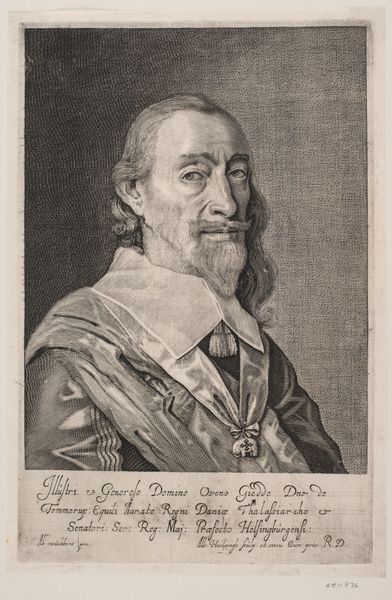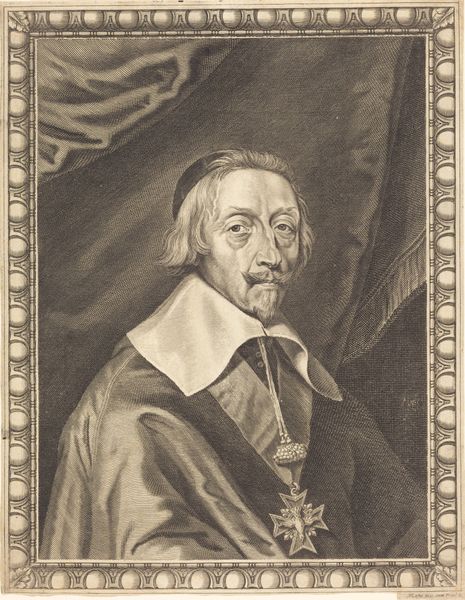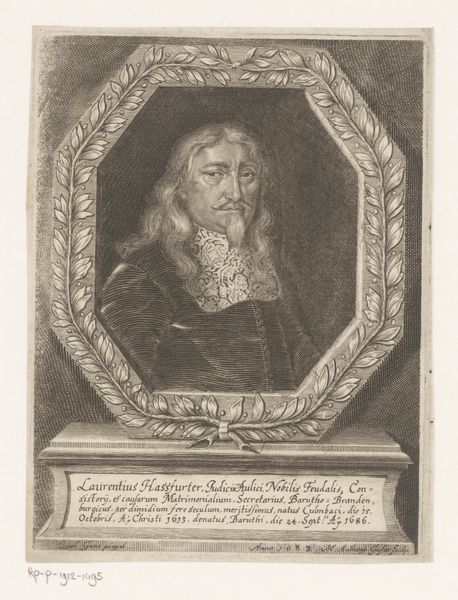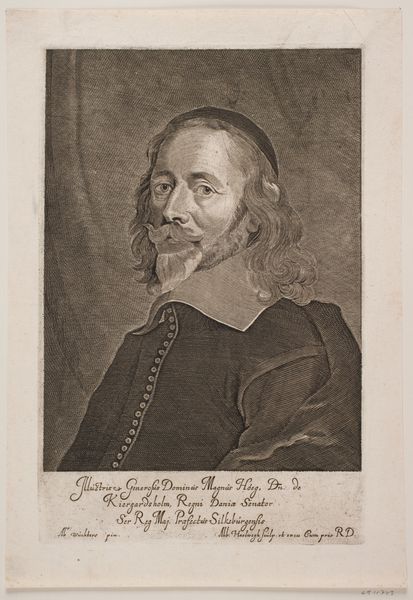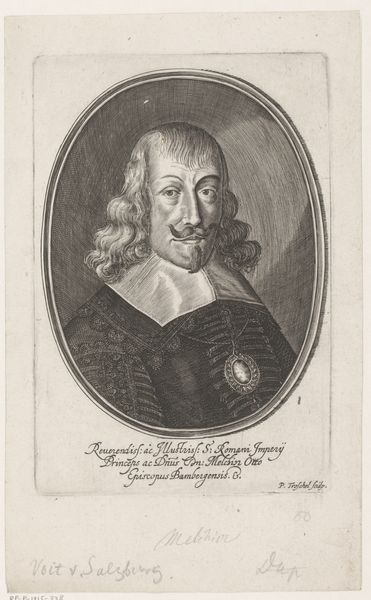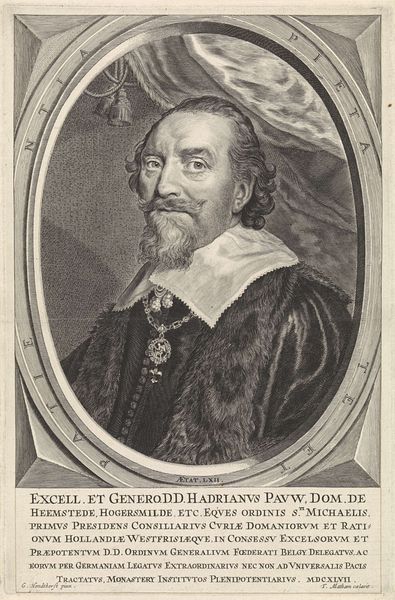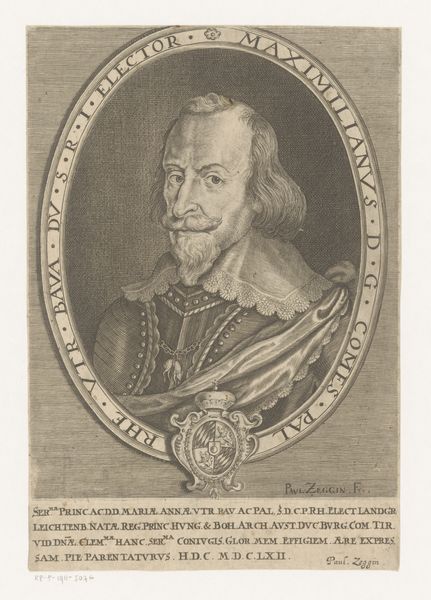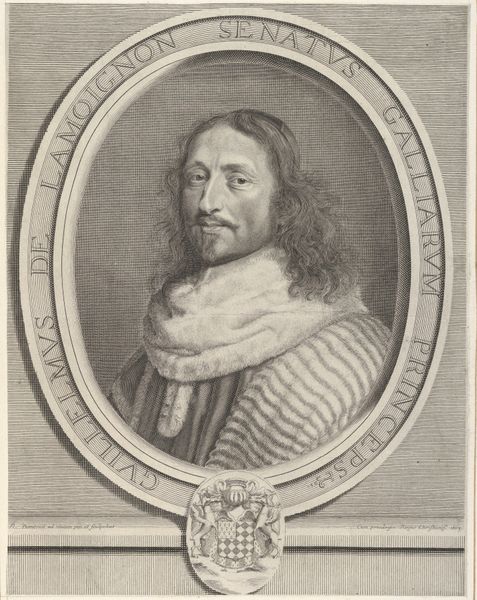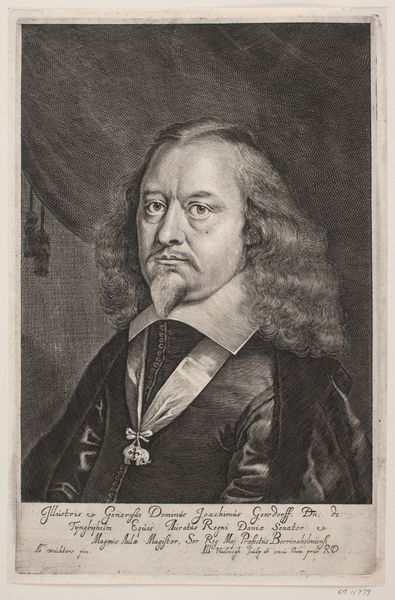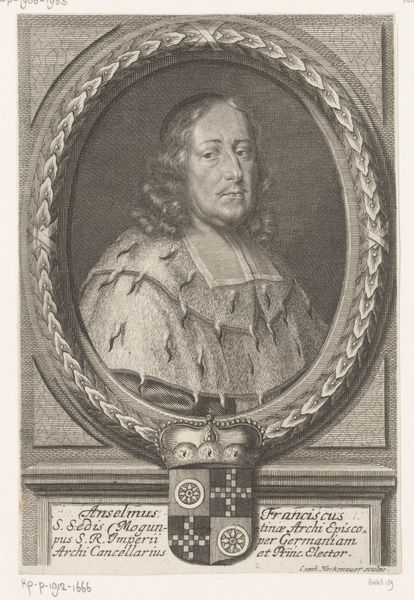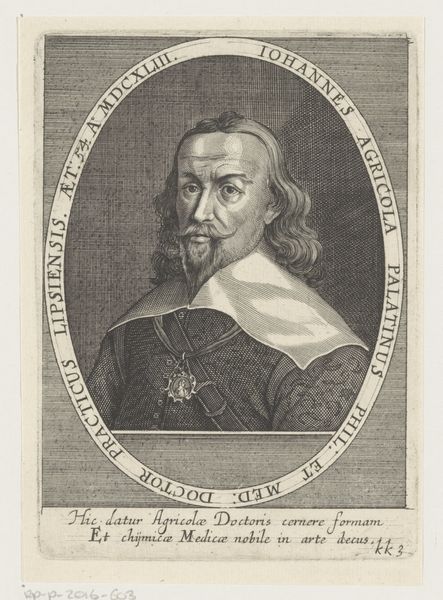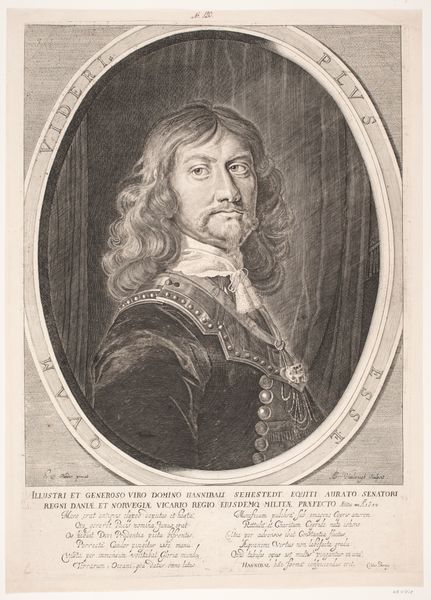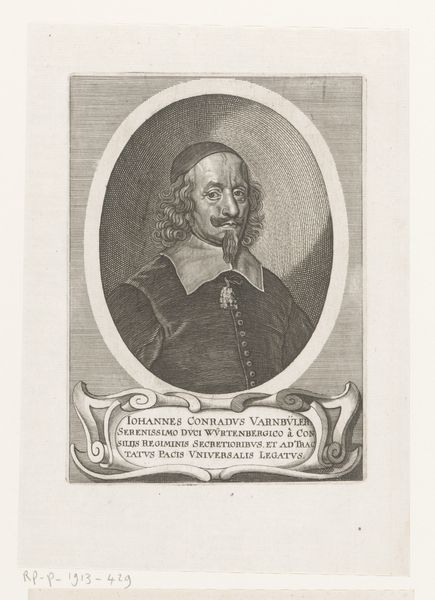
print, engraving
#
portrait
#
baroque
# print
#
portrait drawing
#
history-painting
#
engraving
Dimensions: 312 mm (height) x 207 mm (width) (plademaal)
Curator: Wow, there's such presence in this portrait. It feels both grand and somehow... vulnerable? Editor: Indeed. Let’s delve into this captivating work. It's a piece called "Ove Gedde," an engraving crafted between 1655 and 1659 by Albert Haelwegh. Currently, it resides here at the SMK, the National Gallery of Denmark. Curator: That close-up engraving style! Look at the details in the facial hair—so meticulously rendered, almost lifelike. You can practically feel the texture. It reminds me of historical tapestries or something equally dense and interwoven. Editor: Precisely. Haelwegh uses the medium to great effect. Notice how the formal composition leads the eye. The gaze, slightly averted, carries a certain weight. We see the interplay of light and shadow, sculpting the features, giving form to his noble attire, and emphasizing the geometric planes behind him. The sharp collar provides excellent contrast to his weary gaze, drawing our eye upward. Curator: There’s definitely something intriguing in that averted gaze, isn't there? Is he pondering the next campaign, or did he just spot someone interesting across the room? What secrets do you think are behind his expression? And speaking of attire, those decorations! Heavy is the head that wears the crown... or, well, the medal. Editor: Right, semiotically speaking, all the accoutrements of power—the medal, the embroidered robe—contribute to the construction of Ove Gedde’s identity. We might even explore Derrida's concept of différance; these signifiers define Gedde not just by what they are, but by what they are not – signaling rank and authority precisely because others lack these symbols. But yes, those objects could weigh on his shoulders literally! Curator: I love that contrast: the external show versus the hint of something more thoughtful and quite profound. He could have a past like you or me, struggling or just feeling melancholic from time to time. You know, there’s also that inscription down below; a keyhole perhaps to get to the truth… but illegible without close inspection. What a curious, captivating fellow. Editor: Absolutely, the epigraphic elements augment his persona. His expression feels both resolute and faintly questioning. Haelwegh invites us into a silent dialogue. This detailed execution combined with that psychological depth is why "Ove Gedde" still resonates centuries later. Curator: Indeed! Now that’s what I call a profound print—literally. And if that portrait could only talk... Editor: One could certainly explore those imagined dialogues indefinitely. What is sure is the interplay between surface and the possibility of infinite layers hidden just beyond perception.
Comments
No comments
Be the first to comment and join the conversation on the ultimate creative platform.
